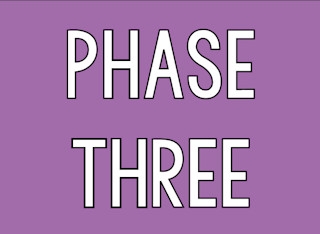Phonics
Our phonics resources are based largely on the UK Government's Letters and Sounds programme, which was published in 2007. Letters and Sounds introduces children to the phonemes and graphemes in stages, allowing them to sound out simple VC (vowel-consonant) and CVC (consonant-vowel-consonant) quickly and begin word building at the same time. As they move through the Phases One to Six, children's phonics knowledge and skills are developed systematically, turning them into confident readers by the end of Year 2 (aged 7).
For an explanation of the vocabulary of phonics, please see below.
The Letters and Sounds programme is as follows:
Phase One (Nursery/Reception)
- Noticing and appreciating environmental sounds, instrumental sounds, body sounds, rhythm and rhyme, alliteration and voice sounds
- Beginning to work on oral blending and segmenting.
Phase Two (Reception over 6 weeks)
- Learning 19 letters of the alphabet and one sound for each
- Blending sounds together to make words
- Segmenting words into their separate sounds
- Beginning to read simple captions.
Phase Three (Reception over 12 weeks)
- Learning the remaining 7 letters of the alphabet and one sound for each
- Learning graphemes such as ch, th, ai, ee representing the remaining phonemes not covered by single letters
- Reading captions, sentences and questions
- At the end of this phase, children will have learned the "simple code" of phonics, ie one grapheme for each phoneme in the English language, as well as many exception of "tricky" words.
Phase Four (Reception - over 4-6 weeks)
- Learning to blend and segment longer words with adjacent consonants, e.g. swim, spin, chimp
Phase Five (throughout Year 1)
- Learning the "complex code"
- Children learn more graphemes for the phonemes which they already know (for example, spelling the e sound with ea) as well as alternative ways of pronouncing familiar graphemes.
Phase Six (throughout Year 2 and beyond)
- Diving deeper into spelling, including prefixes and suffixes, doubling and dropping letters etc.
Our Phonics Resources
Our Activity Village Phonics resources are arranged according to Letters and Sound Phase below.
The Vocabulary of Phonics
- Graphemes: written letters that represent a sound (eg s, a, ee, oa, air)
- Phonemes: the sounds that the letters represent. Each phoneme is a single sound but can be made by using more than one letter (eg s, a, ck, th, ch)
- Digraphs: two letters written together to represent a single sound (eg ck, ey)
- Trigraph: three letters written together that make a single sound (eg igh, air, tch)
- Split digraph: two letters that together make a single sound, but have other letters between them (eg, a-e in cake, o-e in home, i-e in mile)
- Exception words: common words that do not follow regular spelling rules, also known as "tricky" words.
- Sounding out: saying out loud the sound each grapheme makes
- Sound talk: sounding out words (eg t - a - p)
- Blending: sounding out graphemes and then blending them together to form a word (eg t - a - p forms the word tap)
- Segmentation: recognising the individual sounds in words (eg that tap is made up of the sounds t - a - p)
- Grapheme-phoneme correspondence: learning the sounds that letters of the alphabet make (eg that the letter s makes the hissing sound "sss")






